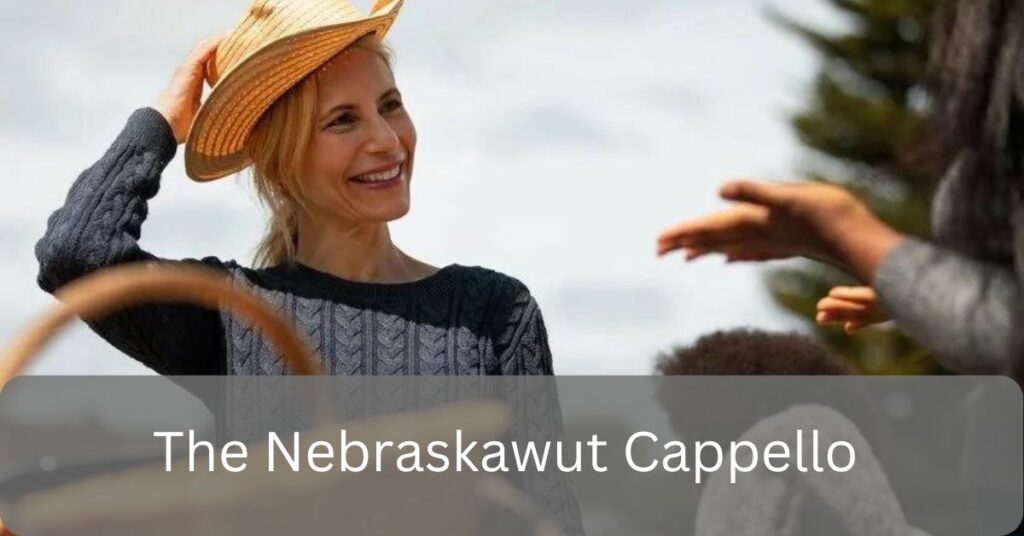The Nebraskawut Cappello stands as a testament to both history and identity, weaving together a narrative that spans generations. This article embarks on a journey through its origins, evolution, and enduring significance in today’s world, offering readers a comprehensive view of this unique cultural artifact.
The History of Nebraskawut Cappello:

The story of the Nebraskawut Cappello begins with the early settlers of Nebraska. Designed initially for practicality, this headwear served as a shield against the unforgiving elements of the region.
Crafted with durability in mind, its form mirrored the resilience and resourcefulness of those who first called Nebraska home. Over time, influences from diverse cultures began to shape its design, enriching its purpose beyond mere protection.
Evolution Over Time:
As Nebraska evolved, so too did the Nebraskawut Cappello. What started as a utilitarian garment gradually evolved into a symbol of cultural pride and heritage.
Each era brought forth new innovations and styles, reflecting the social and economic dynamics of the time.
From simple beginnings, the cappello began to bear intricate embellishments, each telling a story of craftsmanship and adaptation to changing norms.
Influential Figures:
Throughout history, numerous figures have emerged as champions of the Nebraskawut Cappello’s legacy. Local artisans, cultural icons, and historical figures alike have all contributed to its prominence in various spheres.
Their efforts have not only preserved its historical integrity but also elevated its status as a symbol of identity and community pride.
Whether adorned by pioneers on the frontier or celebrated in modern cultural exhibitions, the cappello continues to embody the spirit of resilience and heritage.
Present-Day Relevance:
In contemporary times, the Nebraskawut Cappello remains a cherished artifact, bridging the past with the present. Its presence in cultural exhibitions and local celebrations underscores its enduring relevance.
Beyond its aesthetic appeal, the cappello serves as a reminder of Nebraska’s rich cultural tapestry and the enduring legacy of those who shaped its history.
Cultural Significance:
Beyond its practical origins, the Nebraskawut Cappello holds deep symbolic significance within Nebraska’s cultural landscape.
It serves as a marker of tradition, passed down through generations as a symbol of familial and communal identity.
Each embellishment and stitch tells a story, preserving customs and values that resonate with Nebraskan heritage.
Whether worn in everyday life or during special occasions, the cappello embodies a connection to the past and a commitment to honoring cultural roots.
Artisan Craftsmanship:
The creation of a Nebraskawut Cappello involves intricate craftsmanship and specialized techniques, often passed down from master artisans to apprentices.
From selecting the finest materials to weaving complex patterns, each step in its production reflects a dedication to preserving traditional methods.
Artisans across Nebraska take pride in their ability to craft these distinctive headwear pieces, ensuring that each cappello not only meets functional needs but also carries with it a piece of cultural legacy.
Regional Variations:

While rooted in Nebraskan culture, the Nebraskawut Cappello exhibits regional variations that reflect local aesthetics and influences.
Different communities within Nebraska may incorporate unique designs, colors, or motifs that distinguish their cappellos from others.
These variations highlight the diversity within the state’s cultural fabric, showcasing how the cappello adapts to and evolves with the specific traditions of each region.
Whether worn in rural settings or urban centers, these regional nuances contribute to the cappello’s dynamic presence in Nebraska’s cultural identity.
Contemporary Revival:
In recent years, there has been a resurgence of interest in the Nebraskawut Cappello among designers and fashion enthusiasts alike.
Modern interpretations blend traditional craftsmanship with contemporary styles, offering new perspectives on this timeless artifact.
Fashion shows, exhibitions, and cultural events often feature reinterpretations of the cappello, highlighting its versatility and enduring appeal in today’s globalized world.
This revitalization not only honors its historical significance but also ensures its continued relevance in the cultural discourse of Nebraska and beyond.
Preserving a Legacy:
The Nebraskawut Cappello stands as more than just a piece of headwear; it embodies a legacy of resilience, creativity, and cultural continuity.
Across generations, it has served as a steadfast symbol of Nebraskan identity, evolving alongside the state’s history and reflecting the values of its people.
From its humble beginnings to its contemporary interpretations, the cappello remains a testament to the enduring power of tradition and the timeless beauty of craftsmanship.
As we continue to celebrate its rich heritage, the Nebraskawut Cappello invites us to embrace the past while looking forward to the future, ensuring that its legacy remains vibrant for generations to come.
Sacred Uses and Rituals:
In addition to its everyday and celebratory roles, the Nebraskawut Cappello holds significance in sacred ceremonies and rituals within Nebraska’s indigenous communities.
For centuries, it has been worn during ceremonies that mark important milestones, such as initiations, harvest festivals, or spiritual gatherings.
The cappello’s presence in these contexts underscores its spiritual significance and its role in connecting individuals to their cultural heritage and ancestral traditions.
Its intricate designs and materials often carry symbolic meanings that are deeply intertwined with spiritual beliefs, serving as a conduit between the physical and spiritual realms.
Economic Impact:
Historically, the production and trade of Nebraskawut Cappellos have played a crucial role in the local economy of Nebraska. Artisans specializing in cappello craftsmanship often formed guilds or cooperatives, where skills were passed down through apprenticeships.
The sale and exchange of these headwear pieces not only sustained artisanal communities but also facilitated cultural exchange and economic development.
Today, the cappello continues to contribute to Nebraska’s artisanal economy, with skilled craftsmen and women preserving traditional techniques while adapting to modern market demands.
Educational Initiatives:

Educational initiatives centered around the Nebraskawut Cappello play a vital role in preserving and promoting Nebraska’s cultural heritage. Museums, cultural centers, and educational institutions collaborate to showcase the cappello’s historical significance through exhibits, workshops, and educational programs.
These initiatives aim to educate both locals and visitors about the cappello’s role in shaping Nebraska’s identity, fostering a deeper appreciation for its cultural and artistic value.
By engaging the community in discussions about heritage preservation and cultural diversity, these efforts ensure that the legacy of the Nebraskawut Cappello remains alive and relevant in contemporary society.
Conclusion:
The Nebraskawut Cappello continues to weave its way through Nebraska’s cultural tapestry, embodying resilience, creativity, and cultural continuity. From its origins as a practical garment to its current status as a symbol of identity and heritage, the cappello remains a testament to the enduring spirit of Nebraska’s people. Through rituals, economic activities, educational initiatives, and artistic expressions, the cappello bridges the past with the present, ensuring that its legacy remains vibrant and cherished for generations to come. As Nebraska evolves, so too does the Nebraskawut Cappello, adapting and embracing new interpretations while honoring its deep-rooted traditions and historical significance.
